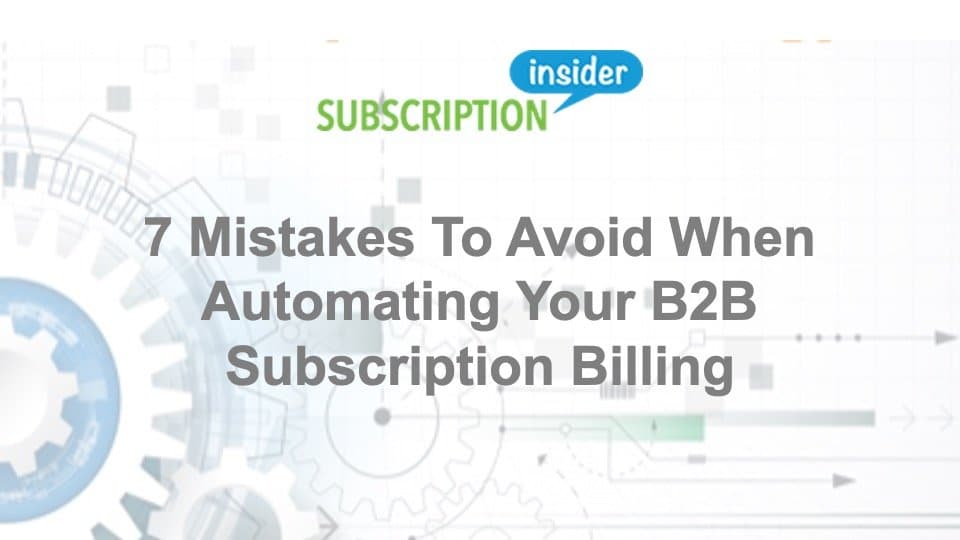
Learn the Right Way To Automate Your B2B Subscription Billing
Lorem ipsum dolor sit amet, consectetur adipiscing elit. Ut elit tellus, luctus nec ullamcorper mattis, pulvinar dapibus leo.
Downloads
Learn the Right Way To Automate Your B2B Subscription Billing
As you refine product-market fit for your SaaS and services product, you need to plan, choose, and scale your B2B subscription billing for success by making sure your operations across teams are coordinated in order to scale your billing and financial systems successfully when you are ready. In this on-demand webinar, we will explore what you need to plan for:
7 mistakes to avoid when automating your B2B subscrip...
HELLO!
This premium article is exclusively reserved for Subscription Insider PRO members.
Want access to premium member-only content like this article? Plus, conference discounts and other benefits? We deliver the information you need, for improved decision-making, skills, and subscription business profitability. Check out these membership options!
Learn more about Subscription Insider PRO memberships!
Already a Subscription Insider PRO Member?
Please Log-In Here!








